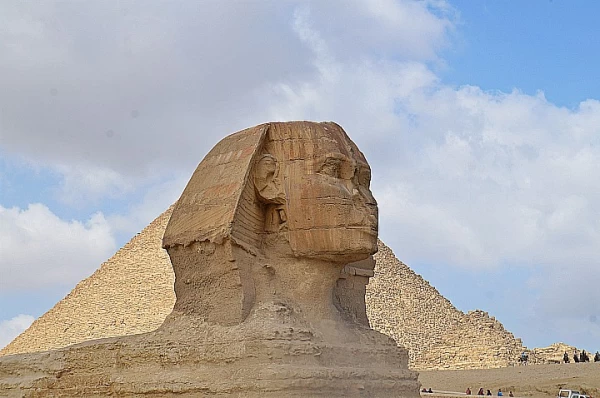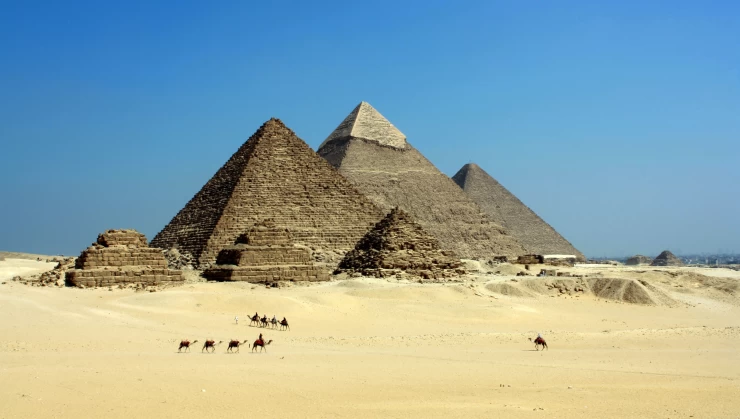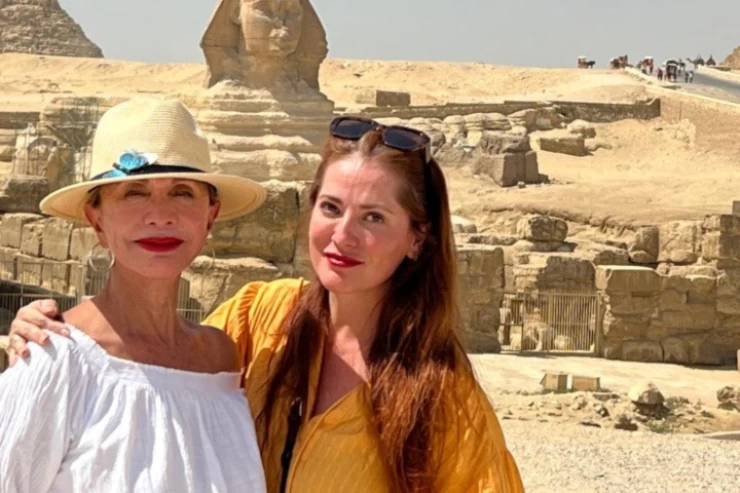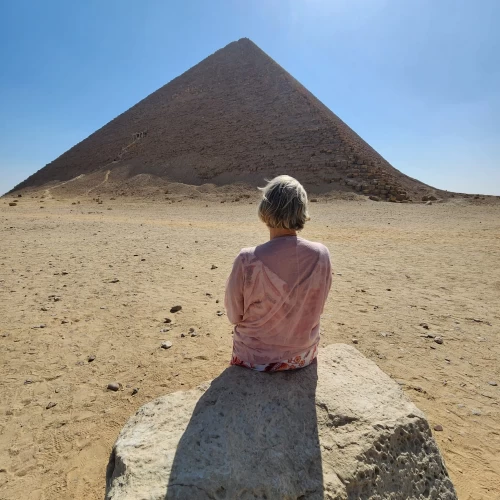
Sphinxes in Ancient Egypt
Sphinxes in Ancient Egypt
The Sphinx is one of the most famous historical monuments in the Arab Republic of Egypt and specifically in the Egyptian city of Giza, due to its unique appearance and its unique location near the pyramids of Giza, which is one of the most important symbols of ancient Egyptian civilization along with this historical statue, and many indicate History and archeologists point out that this great statue belongs to the ancient Egyptian civilization and specifically to the period of the rule of the Fourth Dynasty that ruled Egypt at that time, and some of them dated the ownership of this statue to King Khafra, one of the ancient Egyptian kings and rulers.
This statue of the Sphinx was carved from a single block of stone, and this statue was formed with a lion's body representing strength and the head of a person representing intelligence, which made him combine in a unique genius the strength of the animal with the intelligence of man represented by the person of the reigning king of Egypt as the son of the god Amun Ra, the Lord of the Holy Sun.
The statue is missing his chin, some of which are displayed in sphinxes at the Egyptian Museum in Tahrir Square and the British Museum in London, and in front of "Abu Hool" there are architectural remains of a sizeable unfinished temple, and this temple dates back to the era of the Fourth Dynasty.
In the era of the New Kingdom, statues of the "Sphinx" with the head of a ram or the head of a falcon spread to the forefront of Luxor and Karnak temples. And King Tuthmosis the Fourth, from the age of the eighteenth family in the modern state, set up a dream painting between the two claws of the statue of Abul-Hall in Giza to support his rise to the throne of Egypt based on his fabrication of a story confirming the support of the god to him to become the next ruler of Egypt at that time.
The campaigns led by Tuthmosis the Third to Asia had a great impact on the development of the Sphinx statues, for the first time the victorious Sphinx who trampled his enemies under his feet appeared, and only in this era did the Sphinx abandon his human head and replace it with the head of the legendary dog or the heads of rams such as those at the entrance to the temple Karnak.
In the Greco-Roman era, there appeared 3 different types of "forms" of the Sphinx statues, one of which is the pure Egyptian style, which is a style that has not changed from the traditional form of the Sphinx, which was known in previous times. The third was a mixture between the Egyptians and the Greeks. The headdress of the statue is pure Egyptian, while the claws and the crossed legs are Greek.
The Sphinxes were not only used through the ages in Egypt but also used outside Egypt, due to two reasons. The first is trade relations and the second is the extension of the Egyptian state to its control and influence that reached south of the Anatolian Mountains. Then, an ivory statue of Nimrod appeared in Assyria.
The Sphinx is one of the most famous historical monuments in the Arab Republic of Egypt and specifically in the Egyptian city of Giza, due to its unique appearance and its unique location near the pyramids of Giza, which is one of the most important symbols of ancient Egyptian civilization along with this historical statue, and many indicate History and archeologists point out that this great statue belongs to the ancient Egyptian civilization and specifically to the period of the rule of the Fourth Dynasty that ruled Egypt at that time, and some of them dated the ownership of this statue to King Khafra, one of the ancient Egyptian kings and rulers.
The Sphinx primarily guards the temples where the gods are worshipped. These gods had omniscient powers that enabled them to control the fate of humans and cause phenomena to occur in the world.
This statue of the Sphinx was carved from a single block of stone, and this statue was formed with a lion's body representing strength and the head of a person representing intelligence, which made him combine in a unique genius the strength of the animal with the intelligence of man represented by the person of the reigning king of Egypt as the son of the god Amun Ra, the Lord of the Holy Sun.
The dating of the Sphinx remains a subject of debate; some Egyptologists assume it dates from the reign of Chephren, while other Egyptologists attribute it to the reign of Cheops' son and Chephren's brother, King Djedefre.
In 1936, the Egyptian Egyptologist Selim Hassan discovered the Temple of the Sphinx. It is an unfinished temple, erected to the east of the Sphinx, and is rectangular in plan... The eastern facade of the temple is pierced by two entrances giving access to an open-air courtyard decorated with 24 pillars.
The temple has two sanctuaries, one to the east and the other to the west. Their orientation suggests that one represents the rising sun and the other the setting sun...Note that the 24 pillars of the courtyard may represent the 12 hours of the day and the 12 hours of the night.
The most common version that the cause of the statue's broken nose was the French commander Napoleon Bonaparte during his leadership of the French campaign on Egypt, but there is another older historical account by the historian Taqi al-Din al-Maqrizi, in the fifteenth century AD, which refuted this account.
It was a fanatical Fatimist, who believed that monuments are idols that must be destroyed, as this sheikh carried out a campaign to remove vices and depictions, especially the Sphinx, and he continued to strive to destroy it, until he was satisfied with mutilating its mouth and nose, and the statue remained in this state to this day.


















